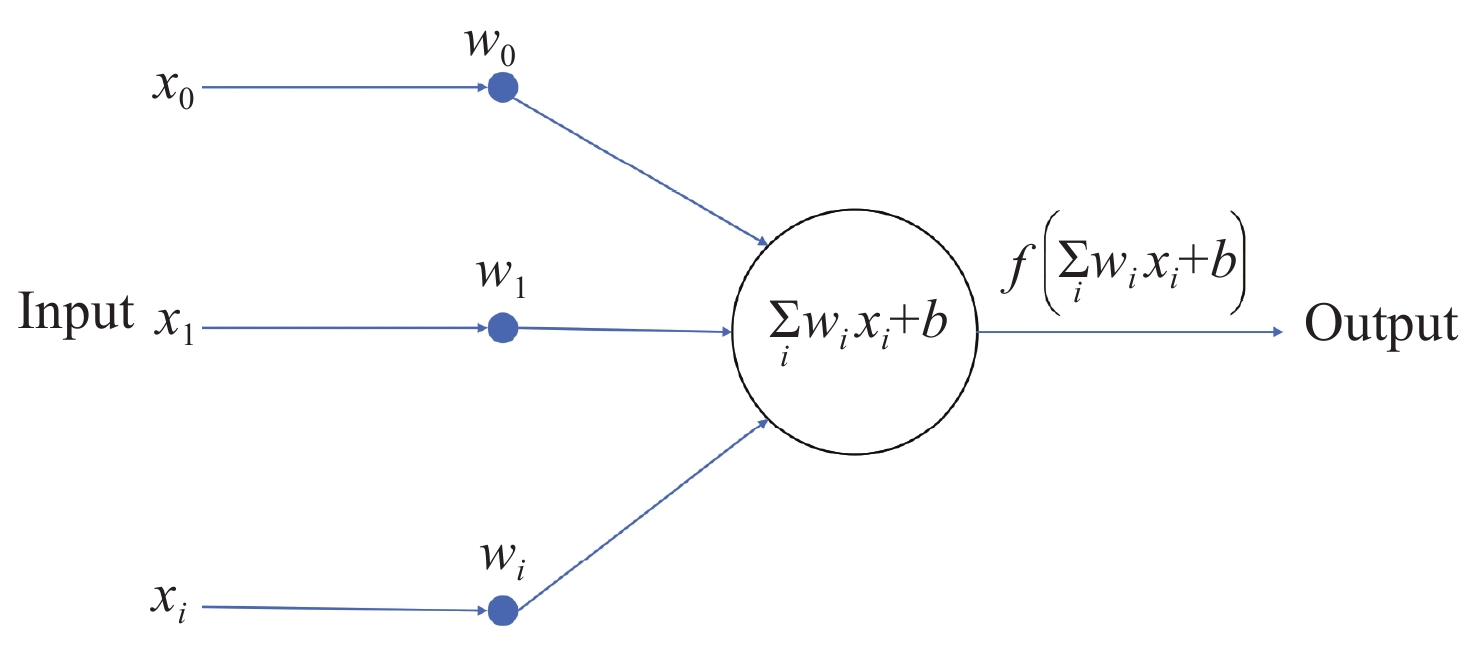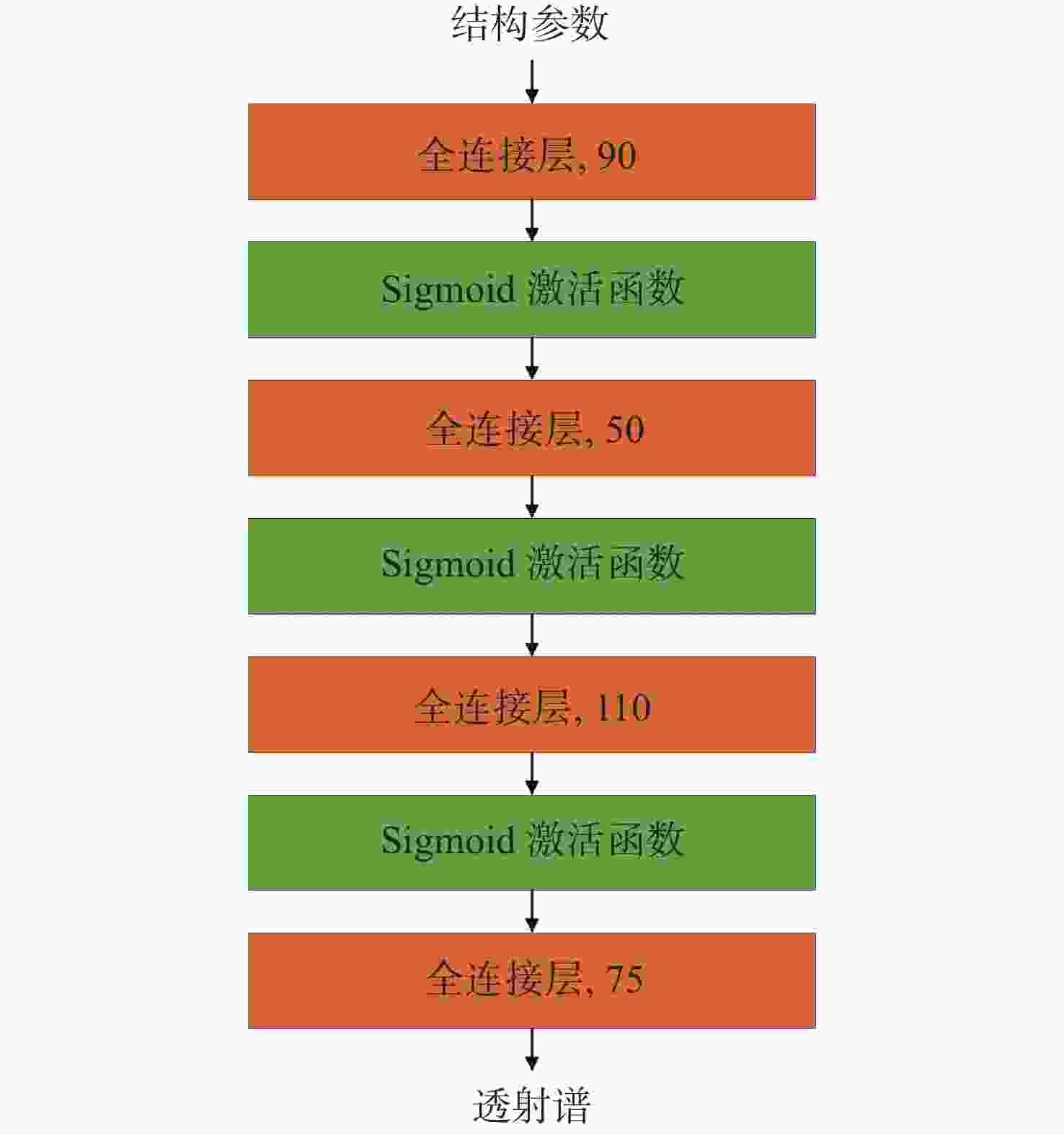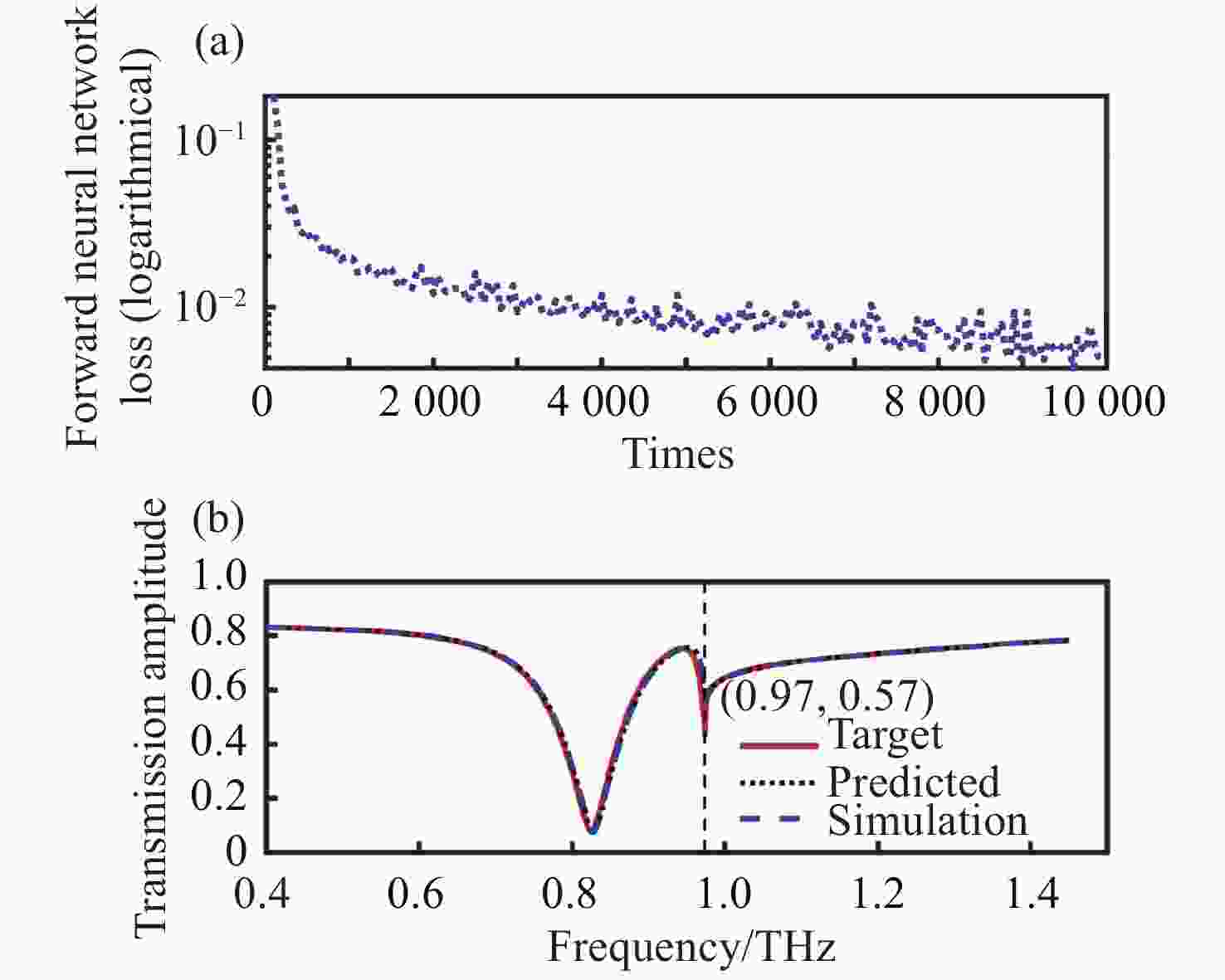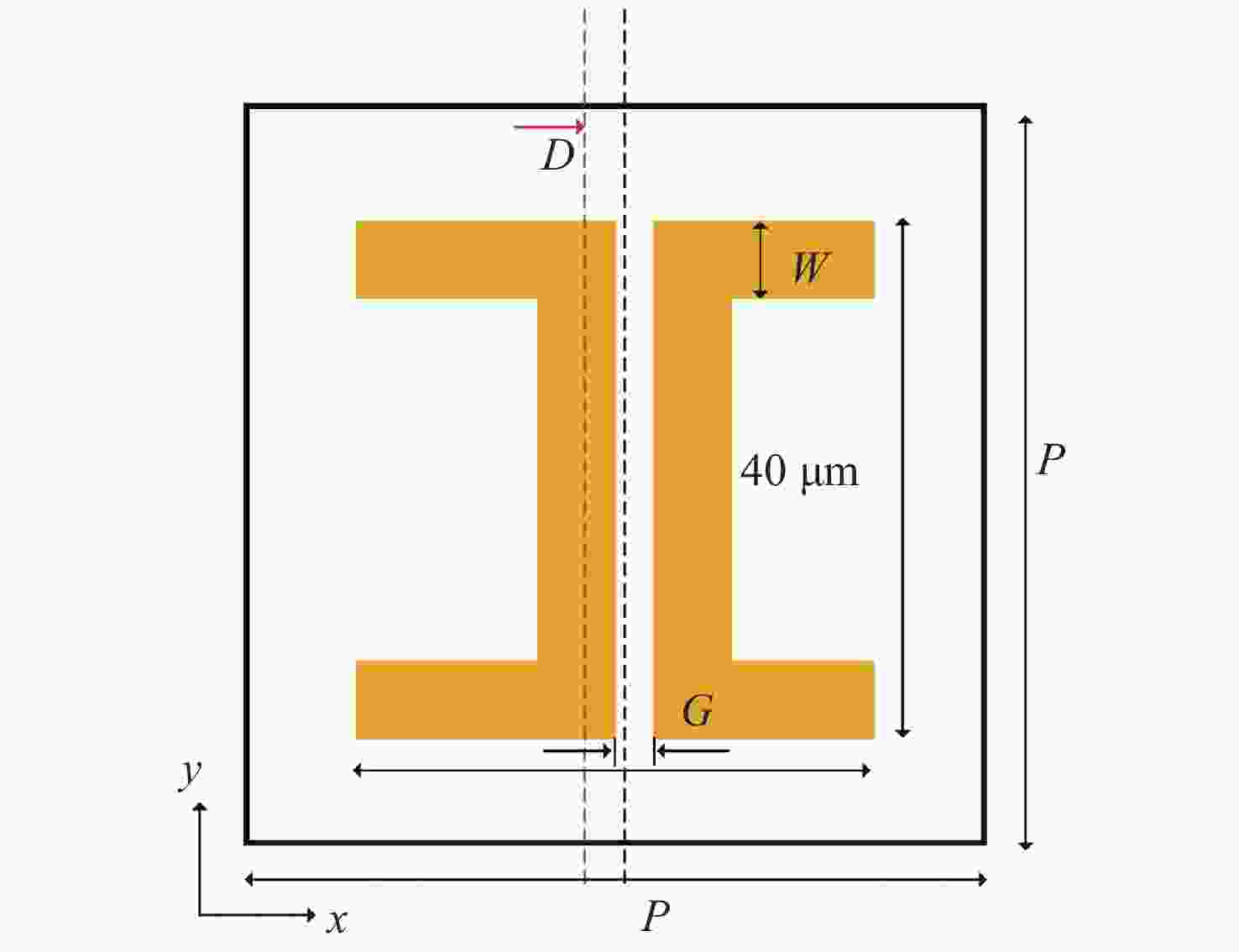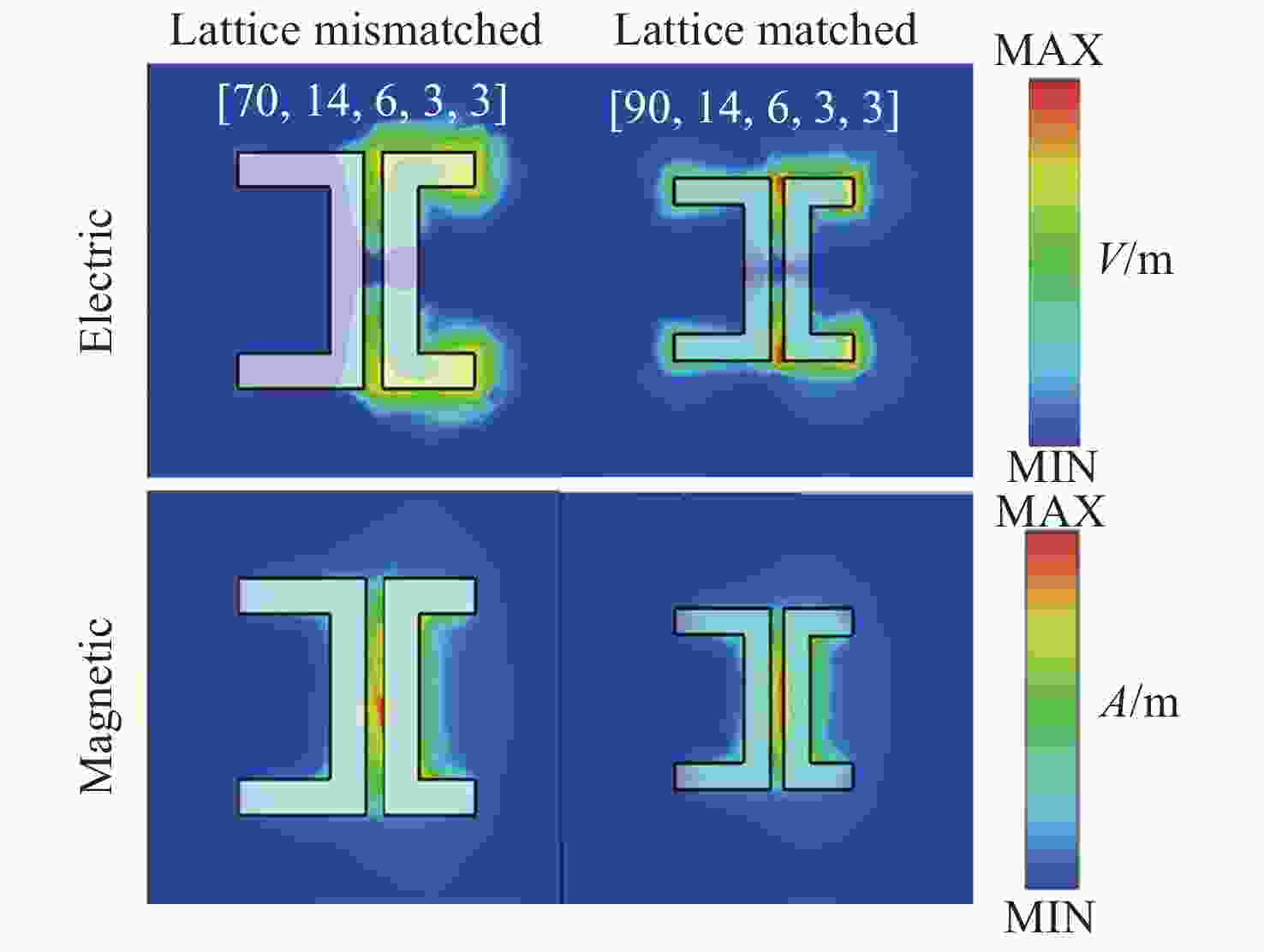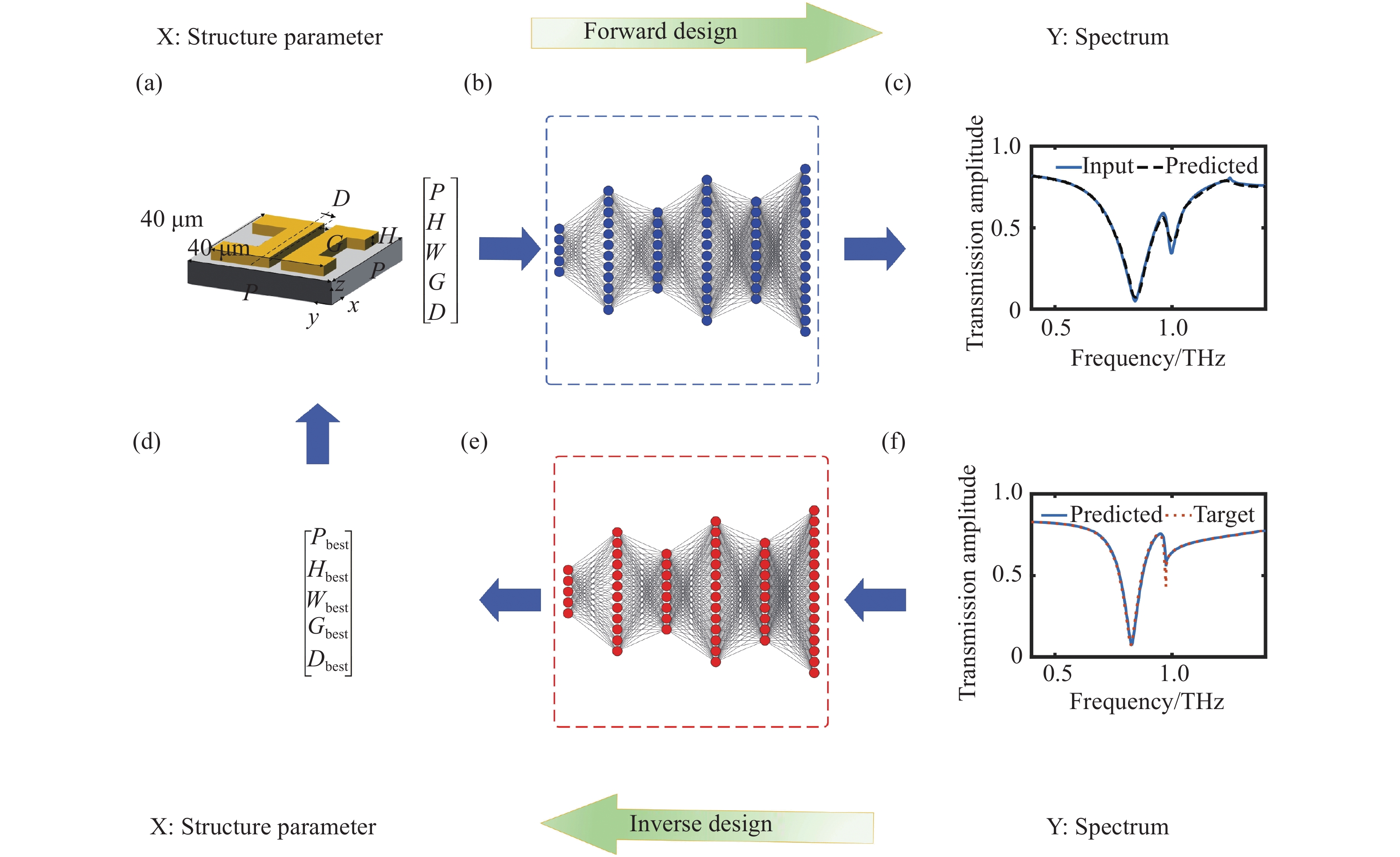-
摘要:
本文提出了一种基于深度学习的超材料Fano共振设计方法,能够获得高Q共振的线宽、振幅和光谱位置特性。利用深度神经网络建立结构参数和透射谱曲线之间的映射,正向网络实现对透射谱的预测,逆向网络实现对高Q共振按需设计,设计过程中实现了低均方误差(MSE),训练集的均方误差为 0.007。与传统方法需要耗时的逐个数值模拟相比,深度学习设计方法大大简化了设计过程,实现了高效、快速的设计目标。对Fano共振的设计也可推广应用到其它类型的超材料的自动逆向设计,显著提高了更复杂的超材料设计的可行性。
Abstract:In this paper, a metamaterial Fano resonance design method based on deep learning is proposed to obtain high-quality factor (high-Q) resonances with desired characteristics, such as linewidth, amplitude, and spectral position.The deep neural network is used to establish the mapping between the structural parameters and the transmission spectrum curve. In the design, the forward network is used to predict the transmission spectrum, and the inverse network is used to achieve the on-demand design of high Q resonance. The low mean square error ( MSE ) is achieved in the design process, and the mean square error of the training set is 0.007. The results indicate that compared with the traditional design process, using deep learning to guide the design can achieve faster, more accurate, and more convenient purposes. The design of Fano resonance can also be extended to the automatic inverse design of other types of metamaterials, significantly improving the feasibility of more complex metamaterial designs.
-
Key words:
- metamaterials /
- neural networks /
- Fano resonance /
- reverse engineering /
- deep learning
-
图 1 用于双向神经网络设计的框架示意图。(a)ASRR的单位单元结构图;(b)正向神经网络图;(c)正向预测输出的透射谱;(d)逆向设计输出的最优参数;(e)逆向神经网络图;(f)逆向设计输入的透射谱
Figure 1. Schematic diagram of the framework used for the bidirectional neural network design process. (a) The unit cell structure diagram of ASRR; (b) the forward neural network diagram; (c) transmission spectrum of the forward prediction output; (d) optimal parameters of the reverse design output; (e) inverse neural network diagram; (f) transmission spectrum of the inverse design input
图 10 在0.97 THz处,结构参数为[70,14,6,3,3]晶格失配和[90,14,6,3,3]晶格匹配条件下,Fano的近场总电场和磁场振幅|E|和|B|。同一场的所有贴图共享相同范围的颜色比例。
Figure 10. The near-field total electric and magnetic field amplitude, |E| and |B| of the Fano resonance under the conditions of the structural parameters of [70, 14, 6, 3, 3] lattice mismatched and [90, 14, 6, 3, 3] lattice matched. All maps of the same field share a color scale with the same range
表 1 训练神经网络的数据值
Table 1. Data values of training neural network
(μm) P H W G D 70 10 5 1 1 71 11 6 2 2 $ \vdots $ $ \vdots $ $ \vdots $ $ \vdots $ $ \vdots $ 125 15 7 3 3 -
[1] FANO U. Effects of configuration interaction on intensities and phase shifts[J]. Physical Review, 1961, 124(6): 1866-1878. doi: 10.1103/PhysRev.124.1866 [2] FEDOTOV V A, ROSE M, PROSVIRNIN S L, et al. Sharp trapped-mode resonances in planar metamaterials with a broken structural symmetry[J]. Physical Review Letters, 2007, 99(14): 147401. doi: 10.1103/PhysRevLett.99.147401 [3] HAO F, SONNEFRAUD Y, VAN DORPE P, et al. Symmetry breaking in plasmonic nanocavities: subradiant LSPR sensing and a tunable Fano resonance[J]. Nano Letters, 2008, 8(11): 3983-3988. doi: 10.1021/nl802509r [4] RAHMANI M, LUK'YANCHUK B, HONG M H. Fano resonance in novel plasmonic nanostructures[J]. Laser &Photonics Reviews, 2013, 7(3): 329-349. [5] KUZNETSOV A I, MIROSHNICHENKO A E, BRONGERSMA M L, et al. Optically resonant dielectric nanostructures[J]. Science, 2016, 354(6314): eaag2472. doi: 10.1126/science.aag2472 [6] CHEN J J, GAN F Y, WANG Y J, et al. Plasmonic sensing and modulation based on Fano resonances[J]. Advanced Optical Materials, 2018, 6(9): 1701152. doi: 10.1002/adom.201701152 [7] LIMONOV M F. Fano resonance for applications[J]. Advances in Optics and Photonics, 2021, 13(3): 703-771. doi: 10.1364/AOP.420731 [8] 付娆, 李子乐, 郑国兴. 超构表面的振幅调控及其功能器件研究进展[J]. 中国光学,2021,14(4):886-899. doi: 10.37188/CO.2021-0017FU R, LI Z L, ZHENG G X. Research development of amplitude-modulated metasurfaces and their functional devices[J]. Chinese Optics, 2021, 14(4): 886-899. (in Chinese) doi: 10.37188/CO.2021-0017 [9] 林婧, 李琦, 邱孟, 等. 人工原子间耦合: 超构表面调控电磁波的新自由度[J]. 中国光学,2021,14(4):717-735. doi: 10.37188/CO.2021-0030LIN J, LI Q, QIU M, et al. Coupling between Meta-atoms: a new degree of freedom in metasurfaces manipulating electromagnetic waves[J]. Chinese Optics, 2021, 14(4): 717-735. (in Chinese) doi: 10.37188/CO.2021-0030 [10] 王锋, 刘星辰, 王政平, 等. 基于手性超材料的太赫兹波非对称传输的研究[J]. 哈尔滨工程大学学报,2015,36(12):1638-1641. doi: 10.11990/jheu.201501046WANG F, LIU X CH, WANG ZH P, et al. A study of asymmetric transmission of terahertz waves based on chiral metamaterials[J]. Journal of Harbin Engineering University, 2015, 36(12): 1638-1641. (in Chinese) doi: 10.11990/jheu.201501046 [11] MIROSHNICHENKO A E, FLACH S, KIVSHAR Y S. Fano resonances in nanoscale structures[J]. Reviews of Modern Physics, 2010, 82(3): 2257-2298. doi: 10.1103/RevModPhys.82.2257 [12] LIU SH D, YANG ZH, LIU R P, et al. High sensitivity localized surface plasmon resonance sensing using a double split nanoring cavity[J]. The Journal of Physical Chemistry C, 2011, 115(50): 24469-24477. doi: 10.1021/jp209754m [13] CHANG W SH, LASSITER J B, SWANGLAP P, et al. A plasmonic Fano switch[J]. Nano Letters, 2012, 12(9): 4977-4982. doi: 10.1021/nl302610v [14] PIAO X J, YU S, PARK N. Control of Fano asymmetry in plasmon induced transparency and its application to plasmonic waveguide modulator[J]. Optics Express, 2012, 20(17): 18994-18999. doi: 10.1364/OE.20.018994 [15] WU C, KHANIKAEV A B, SHVETS G. Broadband slow light metamaterial based on a double-continuum Fano resonance[J]. Physical Review Letters, 2011, 106(10): 107403. doi: 10.1103/PhysRevLett.106.107403 [16] JAFAR-ZANJANI S, INAMPUDI S, MOSALLAEI H. Adaptive genetic algorithm for optical metasurfaces design[J]. Scientific Reports, 2018, 8(1): 11040. doi: 10.1038/s41598-018-29275-z [17] PHAN T, SELL D, WANG E W, et al. High-efficiency, large-area, topology-optimized metasurfaces[J]. Light:Science &Applications, 2019, 8(1): 48. [18] RONG J J, YE W J. Multifunctional elastic metasurface design with topology optimization[J]. Acta Materialia, 2020, 185: 382-399. doi: 10.1016/j.actamat.2019.12.017 [19] LECUN Y, BENGIO Y, HINTON G. Deep learning[J]. Nature, 2015, 521(7553): 436-444. doi: 10.1038/nature14539 [20] 刘硕, 张霜, 崔铁军. 拓扑电路——新奇拓扑物理现象的研究平台[J]. 中国光学,2021,14(4):736-753. doi: 10.37188/CO.2021-0095LIU SH, ZHANG SH, CUI T J. Topological circuit: a playground for exotic topological physics[J]. Chinese Optics, 2021, 14(4): 736-753. (in Chinese) doi: 10.37188/CO.2021-0095 [21] 苏照贤, 姚恩旭, 黄玲玲, 等. 二维人工超材料的光学拓扑性质[J]. 中国光学,2021,14(4):955-967. doi: 10.37188/CO.2021-0074SU ZH X, YAO E X, HUANG L L, et al. Optical topological characteristics of two dimensional artificial metamaterials[J]. Chinese Optics, 2021, 14(4): 955-967. (in Chinese) doi: 10.37188/CO.2021-0074 [22] LI H, OTA K, DONG M X. Learning IoT in edge: deep learning for the internet of things with edge computing[J]. IEEE Network, 2018, 32(1): 96-101. doi: 10.1109/MNET.2018.1700202 [23] SILVER D, HUANG A, MADDISON C J, et al. Mastering the game of Go with deep neural networks and tree search[J]. Nature, 2016, 529(7587): 484-489. doi: 10.1038/nature16961 [24] NASSIF A B, SHAHIN I, ATTILI I, et al. Speech recognition using deep neural networks: a systematic review[J]. IEEE Access, 2019, 7: 19143-19165. doi: 10.1109/ACCESS.2019.2896880 [25] NODA K, ARIE H, SUGA Y, et al. Multimodal integration learning of robot behavior using deep neural networks[J]. Robotics and Autonomous Systems, 2014, 62(6): 721-736. doi: 10.1016/j.robot.2014.03.003 [26] MA W, CHENG F, LIU Y M. Deep-learning-enabled on-demand design of chiral metamaterials[J]. ACS Nano, 2018, 12(6): 6326-6334. doi: 10.1021/acsnano.8b03569 [27] NADELL C C, HUANG B H, MALOF J M, et al. Deep learning for accelerated all-dielectric metasurface design[J]. Optics Express, 2019, 27(20): 27523-27535. doi: 10.1364/OE.27.027523 [28] XU L, RAHMANI M, MA Y X, et al. Enhanced light–matter interactions in dielectric nanostructures via machine-learning approach[J]. Advanced Photonics, 2020, 2(2): 026003. [29] HOU ZH Y, ZHANG P Y, GE M F, et al. Metamaterial reverse multiple prediction method based on deep learning[J]. Nanomaterials, 2021, 11(10): 2672. doi: 10.3390/nano11102672 [30] ZHOU X SH, XIAO Q D, WANG H. Metamaterials design method based on deep learning database[J]. Journal of Physics:Conference Series, 2022, 2185: 012023. doi: 10.1088/1742-6596/2185/1/012023 [31] KHATIB O, REN S M, MALOF J, et al. Deep learning the electromagnetic properties of metamaterials—a comprehensive review[J]. Advanced Functional Materials, 2021, 31(31): 2101748. doi: 10.1002/adfm.202101748 [32] TAN T C W, PLUM E, SINGH R. Lattice-enhanced Fano resonances from bound states in the continuum metasurfaces[J]. Advanced Optical Materials, 2020, 8(6): 1901572. doi: 10.1002/adom.201901572 -





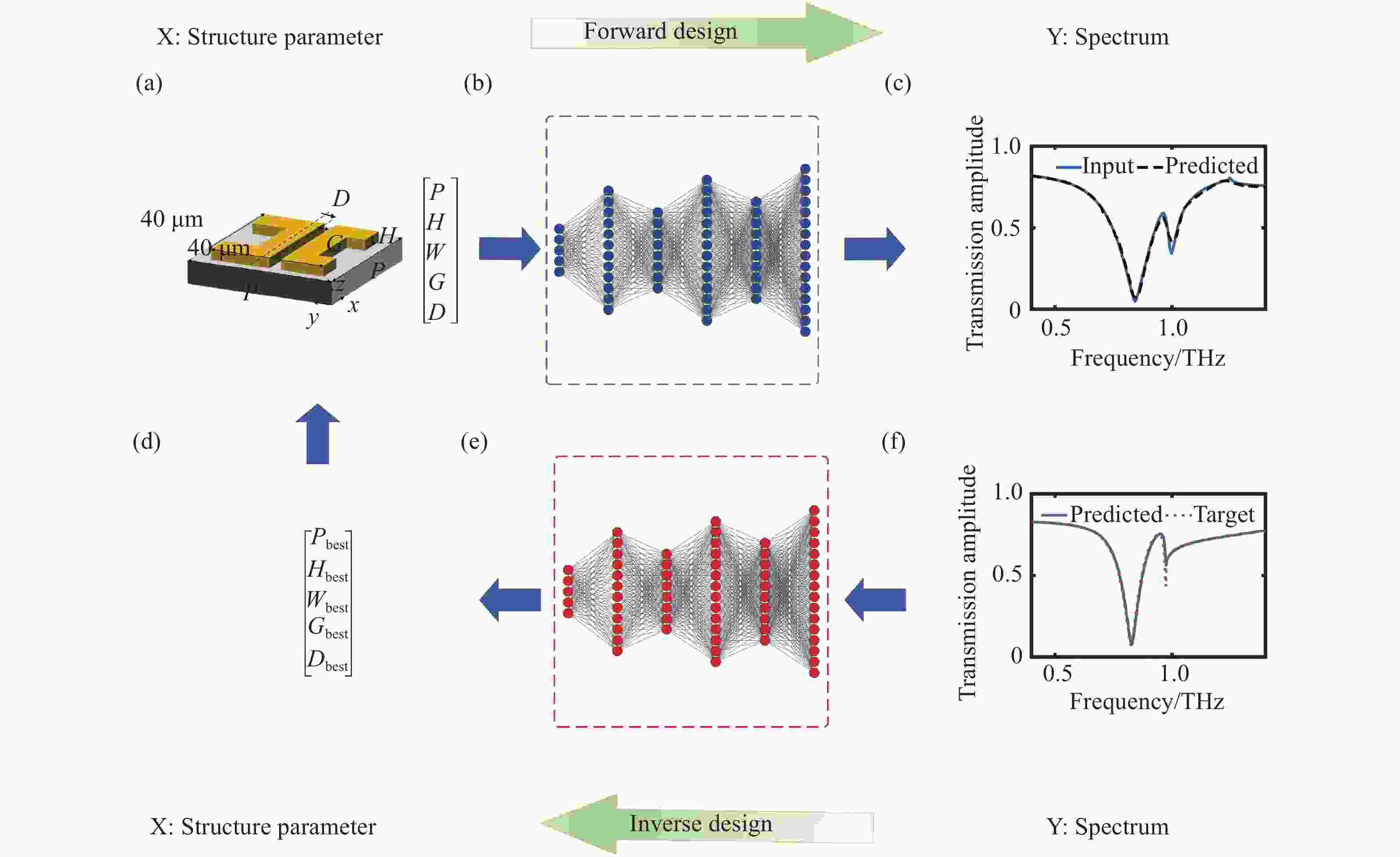
 下载:
下载:
